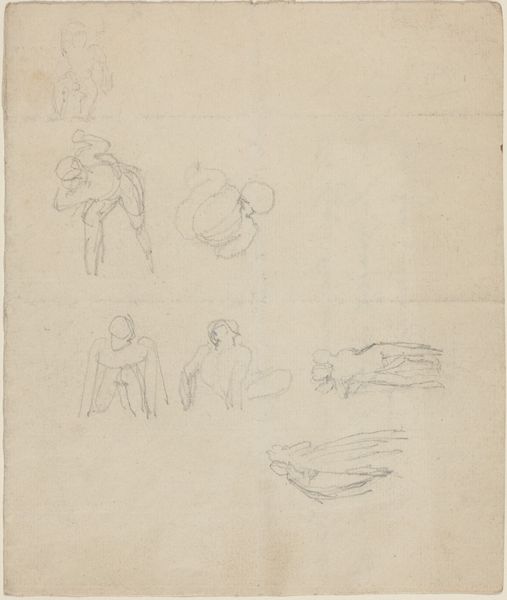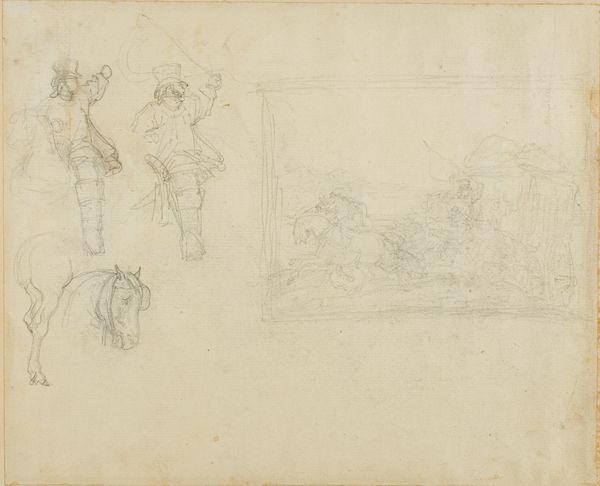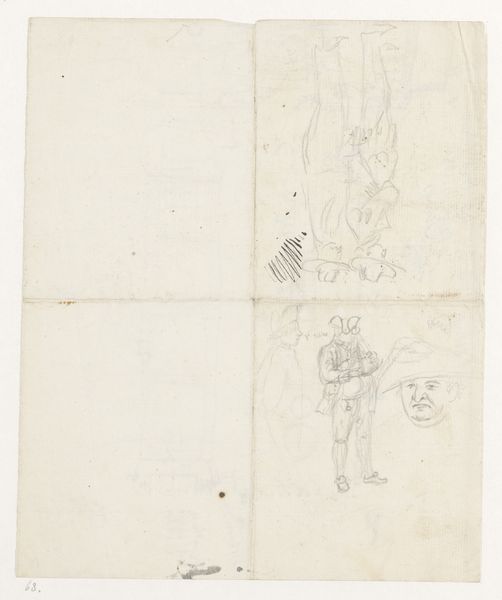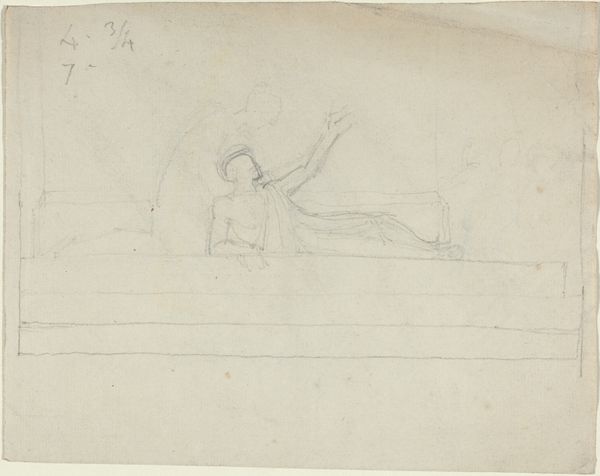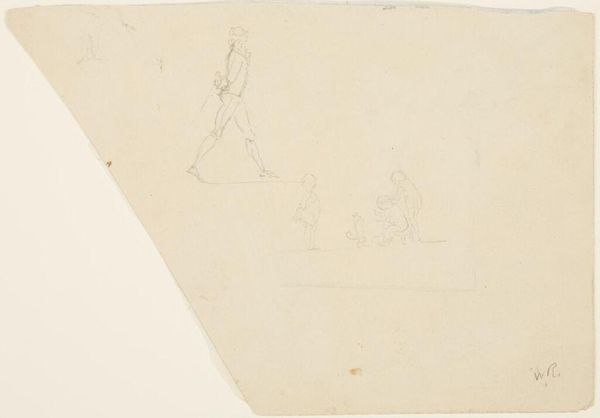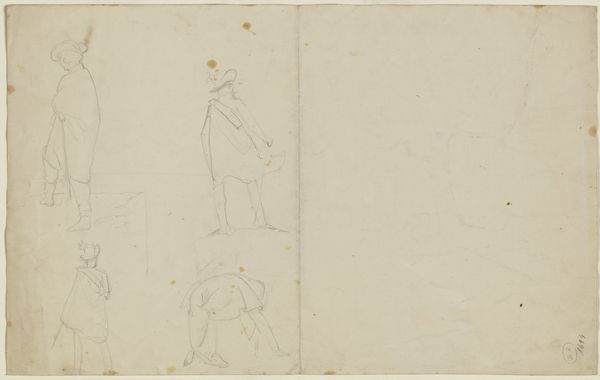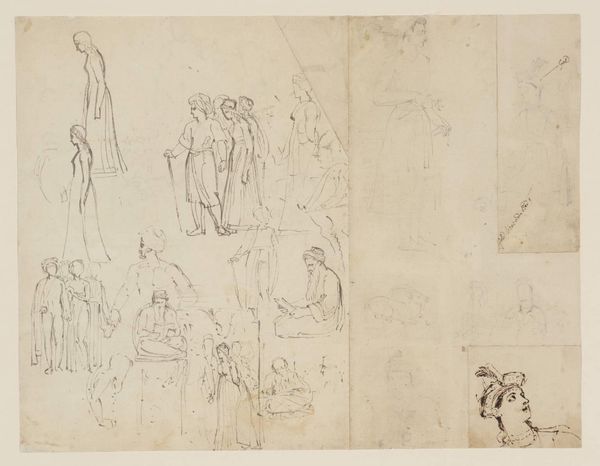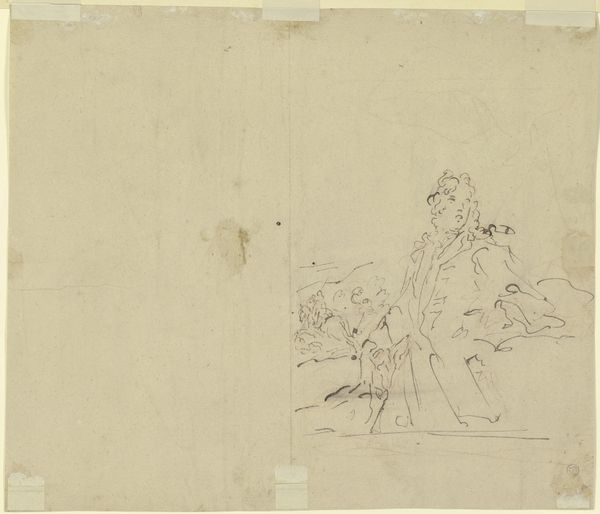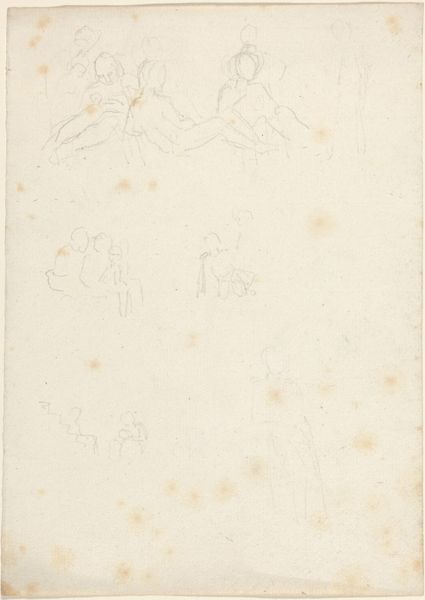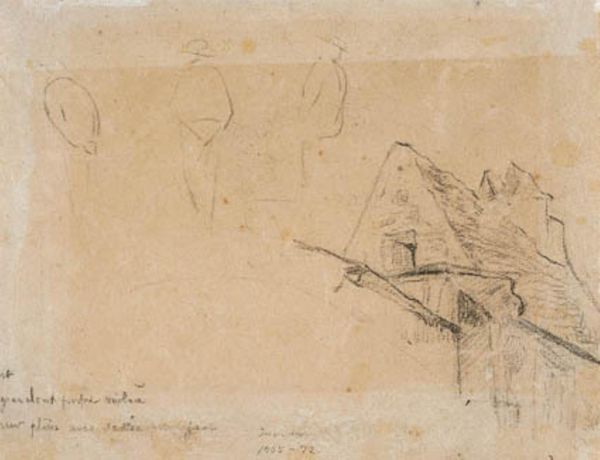
drawing, paper, pencil
#
drawing
#
water colours
#
figuration
#
paper
#
pencil
#
line
Dimensions: 132 mm (height) x 210 mm (width) (bladmaal)
Curator: Immediately, I see a tentative quality in this work; a seeking, almost ephemeral arrangement. Editor: That's a beautiful way to put it. This piece, "Figurskitser af dyr", or "Figure Sketches of Animals," by Niels Larsen Stevns, made with pencil and watercolor on paper between 1864 and 1941, invites such interpretations. It’s part of the collection at the SMK, the National Gallery of Denmark. Curator: Given the materials—paper and pencil, plus those translucent watercolors—and that open "line" style listed in its description, one senses an intimacy. What might these sketches tell us about Stevns’ practice? Is this study? Are these exploratory drawings part of a larger series or project? What economic realities might have informed these kinds of material choices? Editor: Intriguing questions. My mind immediately leaps to the potential symbolism of the figures themselves. We see animals – are those horses at the top? And the figures standing – perhaps representing humanity’s dominion over nature? Or is there something deeper here? Stevns was working during a period of significant change, with shifts in power and the growing disconnect from nature in industrialized societies. Might he be commenting on that through these figures? Curator: I think your reading touches on a crucial element of material culture—power. It goes beyond just illustrating animals. Consider that paper during the 19th and early 20th centuries was a manufactured product tied to specific industrial processes. So by using this medium, and making rapid pencil sketches on top, Stevns participates in that exchange. Editor: So you see the choice of readily available paper as being less about ease and convenience, and more about the impact of mass production at that point? That changes how I understand this sketch. Looking at how loose the drawing is, I can feel the gesture in Stevns' hand. His process adds an element of freedom or defiance even, subverting mass-produced paper to depict this sort of primitive relationship. Curator: Exactly. The artist appropriates a product of the industrial revolution for expressive ends. Editor: I think seeing the work discussed in this way adds so many layers. It certainly invites multiple readings based on our perspectives. Curator: I agree; it opens up richer dialogues with the past when we consider the broader material circumstances.
Comments
No comments
Be the first to comment and join the conversation on the ultimate creative platform.
